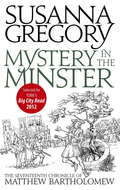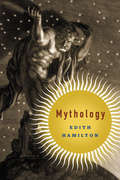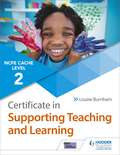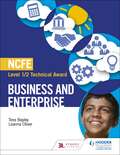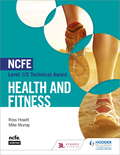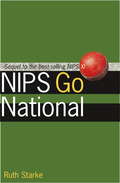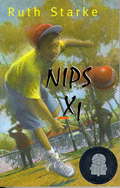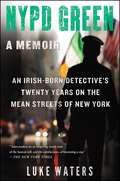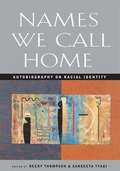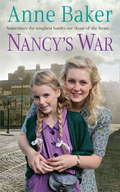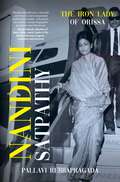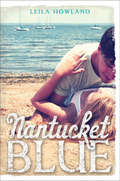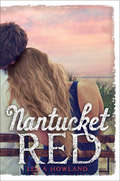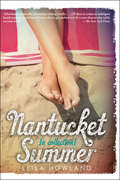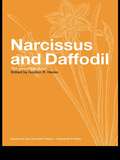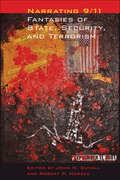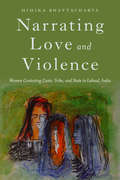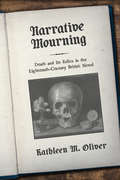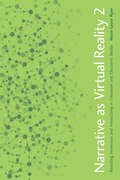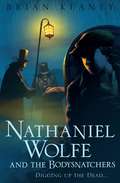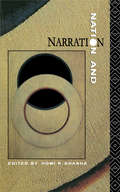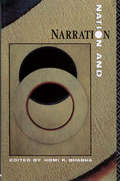- Table View
- List View
Mystery in the Minster: The Seventeenth Chronicle of Matthew Bartholomew (Chronicle of Matthew Bartholomew #17)
by Susanna GregoryIn 1358 the fledging college of Michaelhouse in Cambridge is in need of extra funds. A legacy from the Archbishop of York of a parish close to that city promises a welcome source of income. However, there has been another claim to its ownership and it seems the only way to settle the dispute is for a deputation from Michaelhouse to travel north.Matthew Bartholomew is among the small party which arrives in the bustling city, where the increasing wealth of the merchants is unsettling the established order, and where a French invasion is an ever-present threat to its port. But soon he and his colleagues learn that many of the Archbishop's executors have died in unexplained circumstances and that the codicil naming Michaelhouse as a beneficiary cannot be found...
Mythology: Timeless Tales Of Gods And Heroes
by Edith Hamilton Aphrodite Trust Apollo TrustSince its original publication by Little, Brown and Company in 1942, Edith Hamilton's Mythology has sold millions of copies throughout the world and established itself as a perennial bestseller in its various available formats: hardcover, trade paperback, mass market paperback, and e-book. Mythology succeeds like no other book in bringing to life for the modern reader the Greek, Roman, and Norse myths and legends that are the keystone of Western culture - the stories of gods and heroes that have inspired human creativity from antiquity to the present.
NCFE CACHE Level 2 Certificate in Supporting Teaching and Learning
by Louise BurnhamBe inspired to enhance classroom learning with this textbook, by highly respected and experienced author Louise Burnham.-Build your learning support skills with guidance tailored to the extensive new CACHE qualification due to launch in January 2018-Gain confidence in your role with practical advice and full explanations from best-selling author in STL , Louise Burnham -Translate theory into practice with Tips for Best Practice and Case Studies for challenging topics such as Behaviour Management-Strengthen your understanding of theory and practice, with comprehensive information linked clearly to assessment criteria-Find all the information you need with the colourful, clear design and appropriate language throughout the book -Make the most of your training with the Stretch and Challenge feature-Engage in debate on important STL topics with Classroom Discussion suggestions
NCFE CACHE Level 3 Early Years Educator for the Work-Based Learner: The only textbook for Early Years endorsed by CACHE
by Penny TassoniMaster the knowledge and skills you need to obtain the new work-based CACHE Level 3 Diploma for the Early Years Workforce (Early Years Educator) qualification.Written by bestselling author and early years expert Penny Tassoni, this is the only textbook for work-based learners endorsed by CACHE. Tassoni makes learning the key concepts on the job both easy and enjoyable. This book will support you through your assessment and the start of your career.- Understand all the requirements of the new qualification fully with clearly stated learning outcomes and key terms- See how concepts are applied to a range of settings with numerous case studies- Learn to reflect on your own skills and experiences with numerous 'Reflection' boxes - Practise what you've learned with 'In practice' and 'In your setting' activity boxes- Prepare for examinations and assessment with confidence via activities linked to assessment criteria
NCFE CACHE Technical Level 3 Extended Diploma in Health and Social Care
by Maria Ferreiro Peteiro Elizabeth Rasheed Pete Wedlake Linda WyattExam board: CACHELevel: 3Subject: Health and Social CareFirst teaching: 2017First exams: Various datesMaster the essay-writing skills and concepts required to succeed in the Level 3 Extended Diploma with this CACHE-endorsed textbook.- Covers all 15 mandatory units of the qualification and the two synoptic external assessments.- Clearly outlines specific learning outcomes for each unit.- Develop students' ability to display evidence and effectively evaluate their performance with dedicated reflective activities.- Help learners develop independent research and writing skills in preparation for the external assessment and higher education.
NCFE Level 1/2 Technical Award in Business and Enterprise
by Tess Bayley Leanna OliverBuild your knowledge and develop the practical enterprise skills you need to achieve the Level 1/2 Technical Award with this brand new textbook, endorsed by NCFE and written by business and enterprise experts Tess Bayley and Leanna Oliver.- Access the information you need using the clear and attractive layout. - Test your knowledge and understanding, with activities and Test Yourself questions throughout.- Reinforce the knowledge and skills you need for both the written exam and synoptic project.- Endorsed by NCFE for the 2018 specification, which is approved for inclusion in the 2020, 2021 and 2022 Key Stage 4 performance tables.
NCFE Level 1/2 Technical Award in Health and Fitness
by Mike Murray Ross HowittBuild your knowledge and develop the practical skills you need to achieve the Level 1/2 Technical Award with this brand new textbook, endorsed by NCFE and written by expert authors Mike Murray and Ross Howitt.· Access the information you need using the clear and attractive layout. · Test your knowledge and understanding, with activities and Test Yourself questions throughout.· Reinforce the knowledge and skills you need for both the written exam and synoptic project.· Endorsed by NCFE for the 2018 specification.
NIPS Go National
by Ruth StarkeIn this sequel to the bestselling NIPS XI, the cricket team, together with coach Spinner McGinty, are in Melbourne to compete for the Harmony Cup, and Lan has a lot on his mind: a new star batsman with something to hide, a mystery from Spinner?s past, conflict with his best mate, Izzy, and his fast bowler laid low just before their biggest match ever. Will Lan resolve his problems? Will the Nips get it together in time? Is the Pop Catholic?
NIPS XI
by Ruth StarkeIf white boys can't jump, can Asian kids play cricket? Lan's fed up with being called a nip. He wants to be a true-blue Aussie. What better way than by playing the greatest Anglo game of all?Lan gathers a team together and defiantly gives it a name: NIPS XI. Now all they have to do is get some equipment, find a coach, get themselves a sponsor and learn the rules of the game. Then it's time to challenge the best cricket team in the district.A funny, empowering story of cricket and curry, spinners and leggies, that is about overcoming cultural barriers, in sport and in life.Also by Ruth Starke, NIPS GO NATIONAL is the sequel to the bestselling NIPS XI.
NYPD Green
by Luke WatersIn this gritty, sometimes hilarious, but always brutally honest memoir, Irish immigrant and retired NYPD homicide detective Luke Waters shares the darker and harder side of the police force that "will make you sit up, stay up, and keep reading" (Edward Conlon, author of Blue Blood).Growing up in the rough outskirts of northern Dublin at a time when joining the guards, the army, or the civil service was the height of most parents' ambitions for their children, Luke Waters knew he was destined for a career in some sort of law enforcement. Dreaming of becoming a police officer, Waters immigrated to the United States in search of better employment opportunities and joined the NYPD. Despite a successful career with one of the most formidable and revered police forces in the world, Waters's reality as a cop in New York was a far cry from his fantasy of serving and protecting his community. Over the course of a career spanning more than twenty years--from rookie to lead investigator, during which time he saw New York transform from the crack epidemic of the '90s to the low crime stats of today--Waters discovered that both sides of the law were entrenched in crooked culture. In NYPD Green Waters offers a gripping and fascinating account filled with details from real criminal cases involving murder, theft, gang violence, and more, and takes you into the thick of the danger and scandal of life as a New York cop--both on and off the beat. Balanced with wit and humor, Waters's account paints a vivid picture of the colorful characters on the force and on the streets and provides an unflinching--often critical--look at the corruption and negligence in the justice system put in place to protect us, showing the hidden side of police work where many officers are motivated not purely by the desire to serve the community, but rather by the "green" earned in overtime, expenses, and allowances. A multifaceted and engaging narrative about the immigrant experience in America, Waters's story is also one of personal growth, success, and disillusionment--a rollicking journey through the day-to-day in the New York Police Department.
Names We Call Home: Autobiography on Racial Identity
by Becky Thompson Sangeeta TyagiNames We Call Home is a ground-breaking collection of essays which articulate the dynamics of racial identity in contemporary society. The first volume of its kind, Names We Call Home offers autobiographical essays, poetry, and interviews to highlight the historical, social, and cultural influences that inform racial identity and make possible resistance to myriad forms of injustice.
Nancy's War: Sometimes the toughest battles are those of the heart…
by Anne BakerSunday Times bestselling author Anne Baker returns with another compelling saga of family secrets, heartache and happy endings. When Nancy Seymour's RAF pilot husband, Charles, is killed, her life falls apart. Not only has she lost the man she loved, but she also loses her home and must find a way to support herself and their little girl, Caro, on her own. With the outbreak of World War Two, Nancy is grateful for the sanctuary offered by Charles's father in the form of a little cottage in the countryside. But his mother Henrietta has always disapproved of her son's wife and seems hell-bent on making her life a misery. Nancy has little idea, though, of the depths to which Henrietta is prepared to sink. With the danger of war ever-present, Nancy must find the strength to protect those she holds dear through years of hardship and peril. And, if she survives all this, perhaps she can still hope for a second chance at happiness...
Nandini Satpathy: The Iron Lady of Orissa
by Pallavi RebbapragadaObliterated from the pages of history, as women often are, Odisha&’s first woman Chief Minister, Nandini Satpathy, known also as the Iron Lady of Orissa, was born to a family of revolutionaries and intellectuals. During her teenage years in the &‘40s, this petite girl in a starchy cotton saree was jailed for pulling down the Union Jack from atop the edifice of Ravenshaw College. Thus began the makings of a force to be reckoned with. Coming up through the ranks to ultimately reach the hallowed halls of the Rajya Sabha at the mere age of 31, this grassroots student politician went on to become the I&B minister in Indira Gandhi&’s first government, where she facilitated the working of the Free Bangla Radio that played a key role in the information war that was &’71. She hobnobbed with the likes of Raj Kapoor, Nargis, and Meena Kumari as India produced films around socialist films and warmed up to Russia. And still, in Delhi circles, she is best remembered as &‘Indira Gandhi&’s friend&’. Nandini&’s political career was as tumultuous as her friendship with Indira Gandhi. They were a close-knit duo, brought together by circumstances and kept together by a strong sense of affection and loyalty. That was until the Emergency. Where once she had enjoyed the proximity to the PMO and all the privileges that it came with, Nandini&’s opposition to the Emergency led to a fall from grace. This loss was not just the loss of a friend; it also meant the loss of her political career. During her chief-ministerial tenure, she implemented radical land reforms and tore down the tobacco trade mafia. These were actions that made her a lot of enemies. Once protected by her friendship with the prime minister, she was now subjected to brutal vendetta. In the twilight years of her life, Nandini succumbed to the deep grief of losing her husband and the ignominy of political obscurity. This is the story of Nandini Satpathy.
Nantucket Blue (Nantucket Blue)
by Leila HowlandFor Cricket Thompson, a summer like this one will change everything. A summer spent on Nantucket with her best friend, Jules Clayton, and the indomitable Clayton family. A summer when she'll make the almost unattainable Jay Logan hers. A summer to surpass all dreams. Some of this turns out to be true. Some of it doesn't. When Jules and her family suffer a devastating tragedy that forces the girls apart, Jules becomes a stranger whom Cricket wonders whether she ever really knew. And instead of lying on the beach working on her caramel-colored tan, Cricket is making beds and cleaning bathrooms to support herself in paradise for the summer. But it's the things Cricket hadn't counted on --most of all, falling hard for someone who should be completely off-limits. -- that turn her dreams into an exhilarating, bittersweet reality. A beautiful future is within her grasp, and Cricket must find the grace to embrace it. If she does, her life could be the perfect shade of Nantucket blue. "[Howland] evokes the Nantucket setting vividly . . . when it comes to indulgent beach reading, sometimes it's more fun to get pushed over by a wave than to stay safely on your towel." -- The New York Times "Readers should feel empowered by Cricket's efforts to grow up into a strong, honest, and emotionally intelligent young woman, even as they are enchanted by the romantic and exclusive island setting. This is a natural beach read, but will easily win Howland year-round fans, too." -Publishers Weekly, starred review "Sand, secrets, Nantucket Reds, and romance. A fresh, feel-good debut." -- Boston Globe "Utterly romantic and fun. I didn't want Nantucket Blue to end." -- New York Times best-selling author Jenny Han "Several elements in this novel make it a little more than just another summer romance. Cricket's struggle to define herself apart from Jules, her decision to follow her heart, and her realization that she can rise above her parents' divorce make this a story that many teens will find absorbing." --VOYA "It's going to be the perfect summer for Providence teenager Cricket Thompson. She'll live with her friend Jules' family in their Nantucket house and pursue Jay Logan, the boy of her dreams. But tragedy strikes Jules' life and everything changes, including their friendship. Cricket does end up on Nantucket, but living in the inn where she works long, hard hours. To her surprise, she falls in love with entirely the wrong person -- and learns how magical love can be. A rich satisfying novel for high school students (and older)." -- Providence Journal "Fans of Sarah Dessen will find much to like here, as the charm of this summery yarn lies in Cricket's open appeal. Readers will root for her as she falls down, takes her lumps, and moves forward to her final year in high school, always remembering what she learned under the Nantucket sun." -- Library Journal
Nantucket Red (Nantucket Blue)
by Leila HowlandCricket Thompson's lifetime of overachieving has paid off: she's headed to Brown University in the fall, with a spot on the lacrosse team and a scholarship that covers almost everything. Who knew living in the dorm cost money? An Ivy League education seems to mean living at home for the next four years. When Cricket is offered the chance to earn enough cash to afford a real college experience, she heads back to Nantucket for the summer. But the faraway island challenges Cricket in ways she hadn't anticipated. It's hard to focus on earning money for next year, when she finds her world opening up in entirely new ways???to art, to travel, and, most unexpectedly, to a future completely different from the one she has been working toward her whole life. A friendship blossoms with Ben, the gorgeous surfer and bartender who encourages Cricket to be free, even as she smarts at the pain of seeing Zack, her first love, falling for her worst enemy. But one night, when Cricket finally lets herself break all her own rules, she realizes she may have ruined her carefully constructed future with one impulsive decision. Cricket must dig deep to fight for her future, discovering that success isn't just about reaching goals, but also about listening to what she's been trying to ignore???her own heart.
Nantucket Summer [Nantucket Blue and Nantucket Red bind-up] (Nantucket Blue)
by Leila HowlandFollow the exploits of Cricket Thompson as she explores the alluring island of Nantucket and faces the unexpected in this collection of Leila Howland's first two novels. Nantucket BlueFor Cricket, a summer on Nantucket with her best friend Jules is a life-changing dream come true. That is, until Jules and her family suffer a devastating tragedy, and Jules becomes a stranger. And instead of lying on the beach working on her tan, Cricket is making beds and cleaning bathrooms to support herself in paradise. But it's the things she hadn't counted on-most of all, falling hard for someone who should be completely off-limits-that turn her dreams into an exhilarating, bittersweet reality.Nantucket RedCricket is headed to Brown University in the fall, but to help pay for her living expenses, she returns to work on Nantucket for the summer, where she finds challenges she hadn't anticipated. As her world opens up in new ways, Cricket questions the future she's been working toward her whole life. With the pull of a love triangle complicating everything, she'll have to learn that success isn't just about reaching goals, but also about listening to what she's been trying to ignore-her own heart.Praise for Nantucket Blue "[Howland] evokes the Nantucket setting vividly . . . when it comes to indulgent beach reading, sometimes it's more fun to get pushed over by a wave than to stay safely on your towel." -The New York Times"Sand, secrets, Nantucket Reds, and romance. A fresh, feel-good debut." -The Boston Globe*"Readers should feel empowered by Cricket's efforts to grow up into a strong, honest, and emotionally intelligent young woman, even as they are enchanted by the romantic and exclusive island setting. This is a natural beach read, but will easily win Howland year-round fans, too." -Publishers Weekly, starred review"Fans of Sarah Dessen will find much to like here, as the charm of this summery yarn lies in Cricket's open appeal." -Library Journal "[Cricket's] story is told in a way that is both engaging and alluring. Definitely a standout novel in its genre." -School Library JournalPraise for Nantucket Red"Enjoyable and introspective, this is more than just a summer beach read." -Kirkus Reviews"In this novel about finding oneself and following your heart, Howland creates a character that readers will be cheering for from beginning to end." -VOYA "Nantucket Red is an engaging continuation of Cricket's story, and its pace is perfect for a long weekend or beach read." -School Library Journal
Narcissus and Daffodil: The Genus Narcissus (Medicinal And Aromatic Plants - Industrial Profiles Ser.)
by Gordon R. HanksNarcissus and Daffodil is the first book to provide a complete overview of the genus Narcissus. Prized for centuries in western Europe as an ornamental plant, it has recently attracted attention as a source of potentially valuable pharmaceuticals. In eastern European countries, however, Narcissus and other Amaryllidaceae have been valued as a sourc
Narrating 9/11: Fantasies of State, Security, and Terrorism (A <I>Modern Fiction Studies</I> Book)
by John N. Duvall Robert P. Marzec.Contemporary fiction takes on 9/11, interrogating the global expansion of surveillance based on fantasies of US national security.Winner of the CHOICE Outstanding Academic Title of the Choice ACRLNarrating 9/11 challenges the notion that Americans have overcome the national trauma of the terrorist attacks on the World Trade Center and the Pentagon. The volume responds to issues of war, surveillance, and the expanding security state, including the Bush Administration’s policies on preemptive war, extraordinary rendition, torture abroad, and the suspension of privacy rights and civil liberties at home.Building on the work of Giorgio Agamben, Slavoj Žižek, and Donald Pease, the contributors focus on the ways in which post-9/11 narratives help make visible the fantasies that attempt to justify the ongoing state of exception and American exceptionalism. Narrating 9/11 examines a variety of contemporary narratives as they relate to the cultural construction of the neoliberal nation-state, a role that mediates the possibilities of ethnic and religious identity as well as the ability to imagine terrorism. Touching on some of the mainstays of 9/11 fiction, including Jonathan Safran Foer’s Extremely Loud & Incredibly Close and John Updike’s Terrorist, the book expands this particular canon by considering the work of such writers as Jess Walter, William Gibson, Lauren Groff, Ken Kalfus, Ian McEwan, Philip Roth, John le Carré, Laila Halaby, Michael Chabon, and Jarett Kobek. Narrating 9/11 pushes beyond a critical focus on domestic realism, offering chapters that examine speculative and genre fiction, postmodernism, climate change, and the evolving security state, as well as the television series Lost and the film Paradise Now.
Narrating Love and Violence: Women Contesting Caste, Tribe, and State in Lahaul, India
by Himika BhattacharyaNarrating Love and Violence is an ethnographic exploration of women’s stories from the Himalayan valley of Lahaul, in the region of Himachal Pradesh, India, focusing on how both, love and violence emerge (or function) at the intersection of gender, tribe, caste, and the state in India. Himika Bhattacharya privileges the everyday lives of women marginalized by caste and tribe to show how state and community discourses about gendered violence serve as proxy for caste in India, thus not only upholding these social hierarchies, but also enabling violence. The women in this book tell their stories through love, articulated as rejection, redefinition and reproduction of notions of violence and solidarity. Himika Bhattacharya centers the women’s narratives as a site of knowledge—beyond love and beyond violence. This book shows how women on the margins of tribe and caste know both, love and violence, as agents wishing to re-shape discourses of caste, tribe and community.
Narrative Matters: Writing to Change the Health Care System
by Jessica BylanderDrawn from the popular "Narrative Matters" column in the journal Health Affairs, these essays embody a vision for a health care system that centers the humanity of patients and doctors alike.Health care decision making affects patients and families first and foremost, yet their perspectives are not always factored into health policy deliberations and discussions. In this anthology, Jessica Bylander brings together the personal stories of the patients, physicians, caregivers, policy makers, and others whose writings add much-needed human context to health care decision making.Drawn from the popular "Narrative Matters" column in the leading health policy journal Health Affairs, this collection features essays by some of the leading minds in health care today, including Pulitzer Prize–winner Siddhartha Mukherjee, MacArthur fellow Diane Meier, former Planned Parenthood president Leana S. Wen, and former secretary of health and human services Louis W. Sullivan. The collection also presents important stories from lesser-known voices, including a transgender doctor in Oklahoma who calls for better treatment of trans patients and a palliative care physician who reflects on how perspectives on hastening death have changed in recent years. A foreword written by National Humanities Medal recipient Abraham Verghese, MD, further rounds out the book.The collection of thirty-two essays is organized around several themes:• the practice of medicine • medical innovation and research• patient-centered care• the doctor-patient relationship• disparities and discrimination• aging and end-of-life care• maternity and childbirth• opioids and substance abuseContributors: Louise Aronson, Laura Arrowsmith, Cheryl Bettigole, Cindy Brach, Gary Epstein-Lubow, Jonathan Friedlaender, Patricia Gabow, Katti Gray, Yasmin Sokkar Harker, Timothy Hoff, Carla Keirns, Raya Elfadel Kheirbek, Katy B. Kozhimannil, Pooja Lagisetty, Maria Maldonado, Maureen A. Mavrinac, Diane E. Meier, Dina Keller Moss, Siddhartha Mukherjee, Donna Jackson Nakazawa, Travis N. Rieder, Aroonsiri Sangarlangkarn, Elaine Schattner, Janice Lynch Schuster, Myrick C. Shinall, Gayathri Subramanian, Louis W. Sullivan, Gautham K. Suresh, Abraham Verghese, Otis Warren, Leana S. Wen, Charlotte Yeh
Narrative Mourning: Death and Its Relics in the Eighteenth-Century British Novel (Transits: Literature, Thought & Culture 1650-1850)
by Kathleen M. OliverNarrative Mourning explores death and its relics as they appear within the confines of the eighteenth-century British novel. It argues that the cultural disappearance of the dead/dying body and the introduction of consciousness as humanity’s newfound soul found expression in fictional representations of the relic (object) or relict (person). In the six novels examined in this monograph—Samuel Richardson's Clarissa and Sir Charles Grandison; Sarah Fielding's David Simple and Volume the Last; Henry Mackenzie's The Man of Feeling; and Ann Radcliffe's The Mysteries of Udolpho—the appearance of the relic/relict signals narrative mourning and expresses (often obliquely) changing cultural attitudes toward the dead. Published by Bucknell University Press. Distributed worldwide by Rutgers University Press.
Narrative as Virtual Reality 2: Revisiting Immersion and Interactivity in Literature and Electronic Media
by Marie-Laure RyanRethinking textuality, mimesis, and the cognitive processing of texts in light of new modes of artistic world construction.Winner of the Aldo and Jeanne Scaglione Prize for Comparative Literary Studies from the Modern Language Association of AmericaIs there a significant difference between engagement with a game and engagement with a movie or novel? Can interactivity contribute to immersion, or is there a trade-off between the immersive "world" aspect of texts and their interactive "game" dimension? As Marie-Laure Ryan demonstrates in Narrative as Virtual Reality 2, the questions raised by the new interactive technologies have their precursors and echoes in pre-electronic literary and artistic traditions. Approaching the idea of virtual reality as a metaphor for total art, Ryan applies the concepts of immersion and interactivity to develop a phenomenology of narrative experience that encompasses reading, watching, and playing. The book weighs traditional literary narratives against the new textual genres made possible by the electronic revolution of the past thirty years, including hypertext, electronic poetry, interactive drama, digital installation art, computer games, and multi-user online worlds like Second Life and World of Warcraft.In this completely revised edition, Ryan reflects on the developments that have taken place over the past fifteen years in terms of both theory and practice and focuses on the increase of narrativity in video games and its corresponding loss in experimental digital literature. Following the cognitive approaches that have rehabilitated immersion as the product of fundamental processes of world-construction and mental simulation, she details the many forms that interactivity has taken—or hopes to take—in digital texts, from determining the presentation of signs to affecting the level of story.
Nathaniel Wolfe and the Bodysnatchers
by Brian KeaneyThe dead cannot rest in peace. Bodysnatchers are plundering the graveyard and stirring up more than they bargained for. It's a job for a ghost hunter! But first Nathaniel Wolfe must take a terrifying journey to the Other Side and put right a terrible wrong...
Nation & Narration
by Homi K BhabhaBhabha, in his preface, writes 'Nations, like narratives, lose their origins in the myths of time and only fully encounter their horizons in the mind's eye'. From this seemingly impossibly metaphorical beginning, this volume confronts the realities of the concept of nationhood as it is lived and the profound ambivalence of language as it is written. From Gillian Beer's reading of Virginia Woolf, Rachel Bowlby's cultural history of Uncle Tom's Cabin and Francis Mulhern's study of Leaviste's 'English ethics'; to Doris Sommer's study of the 'magical realism' of Latin American fiction and Sneja Gunew's analysis of Australian writing, Nation and Narration is a celebration of the fact that English is no longer an English national consciousness, which is not nationalist, but is the only thing that will give us an international dimension.
Nation and Narration
by Homi K. BhabhaBhabha, in his preface, writes 'Nations, like narratives, lose their origins in the myths of time and only fully encounter their horizons in the mind's eye'.From this seemingly impossibly metaphorical beginning, this volume confronts the realities of the concept of nationhood as it is lived and the profound ambivalence of language as it is written. From Gillian Beer's reading of Virginia Woolf, Rachel Bowlby's cultural history of Uncle Tom's Cabin and Francis Mulhern's study of Leaviste's 'English ethics'; to Doris Sommer's study of the 'magical realism' of Latin American fiction and Sneja Gunew's analysis of Australian writing, Nation and Narration is a celebration of the fact that English is no longer an English national consciousness, which is not nationalist, but is the only thing that will give us an international dimension.
